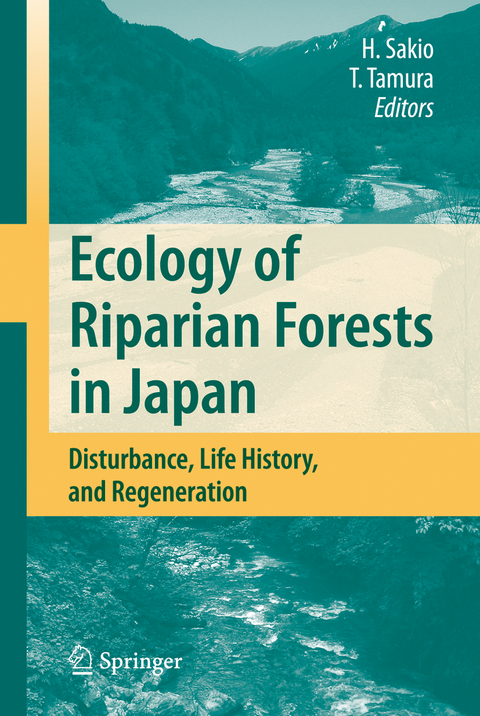
Ecology of Riparian Forests in Japan
Springer Verlag, Japan
978-4-431-99841-9 (ISBN)
Features of riparian forests in Japan.- Geography, disturbance regime and dynamics of sediments in riparian zone.- Occurrence of hillslope processes affecting riparian vegetation in upstream watersheds of Japan.- Sediment dynamics and characteristics with respect to river disturbance.- Riparian community.- Vegetation-geographic evaluation of the syntaxonomic system of valley-bottom forests occurring in the cooltemperate zone of the Japanese Archipelago.- Riparian forests in headwater stream.- Coexistence mechanisms of three riparian species in the upper basin with respect to their life histories, ecophysiology, and disturbance regimes.- Population dynamics and key stages in two Japanese riparian elements.- Rodent seed hoarding and regeneration of Aesculus turbinata: patterns, processes and implications.- Longitudinal variation in disturbance regime and community structure of a riparian forest established on a small alluvial fan in warm-temperate southern Kyushu, Japan.- Riparian forests on wide alluvial fan.- Structure and composition of riparian forests with reference to geomorphic conditions.- Mosaic structure of riparian forests on the riverbed and floodplain of a braided river: A case study in the Kamikouchi Valley of the Azusa River.- Coexistence of Salix species in a seasonally flooded habitat.- Riparian forests in lowland regions.- Process of willow community establishment and topographic change of riverbed in a warm-temperate region of Japan.- Growth and nutrient economy of riparian Salix gracilistyla.- The expansion of woody shrub vegetation (Elaeagnus umbellata) along a regulated river channel.- Riparian forests in wetland.- Distribution pattern and regeneration of swamp forest species with respect to site conditions.- Flooding adaptations of wetland trees.- Species diversity of riparian forests.- Diversity of tree species in mountain riparian forest in relation to disturbance-mediated microtopography.- Diversity of forest floor vegegation with landform type.- Endangered species and its conservation.- Ecology and conservation of an endangered willow, Salix hukaoana.- Strategy for the reallocation of plantations to semi-natural forest for the conservation of endangered riparian tree species.- Conclusion.- General conclusions concerning riparian forest ecology and conservation.
| Zusatzinfo | 8 Illustrations, color; 140 Illustrations, black and white; XVI, 339 p. 148 illus., 8 illus. in color. |
|---|---|
| Verlagsort | Tokyo |
| Sprache | englisch |
| Maße | 155 x 235 mm |
| Themenwelt | Naturwissenschaften ► Biologie ► Botanik |
| Naturwissenschaften ► Biologie ► Limnologie / Meeresbiologie | |
| Naturwissenschaften ► Biologie ► Ökologie / Naturschutz | |
| Naturwissenschaften ► Geowissenschaften ► Geografie / Kartografie | |
| Weitere Fachgebiete ► Land- / Forstwirtschaft / Fischerei | |
| ISBN-10 | 4-431-99841-1 / 4431998411 |
| ISBN-13 | 978-4-431-99841-9 / 9784431998419 |
| Zustand | Neuware |
| Haben Sie eine Frage zum Produkt? |
aus dem Bereich


